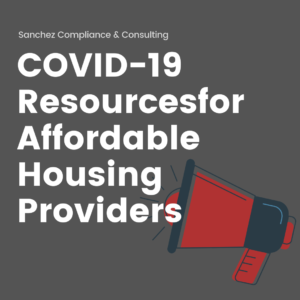You juggle a thousand tasks every day as a property manager. The last thing you need is another compliance headache, but the topic of a utility allowance often feels like a big one. It’s a critical piece of the affordable housing compliance puzzle, yet it can be confusing and stressful to manage.
Getting the utility alManaging Utility Alllowance right affects your residents’ rent, your property’s compliance, and your asset management strategy. In this guide, we’ll explain what it is, why it matters, and how to manage it without frustration. You can stay audit-ready and focus on what you do best: managing your real estate properties and helping your residents.
Table Of Contents:
- What Exactly Is a Utility Allowance?
- Why You Cannot Afford to Get This Wrong
- Different Methods for Calculating Your Utility Allowance
- What Is Included in a Utility Allowance Calculation?
- How Often Do You Need to Review Your Utility Allowance?
- Taking the Headache Out of Utility Allowance Studies
- Conclusion
What Exactly Is a Utility Allowance?

A utility allowance is an estimated monthly cost for the utilities a resident is expected to pay. This covers essential services like electricity, heat, water, and trash collection. This amount is not a guess; it is a carefully calculated figure.
State housing agencies require this calculation for rent-restricted properties, especially within the housing tax credit program. The reason is that the maximum allowable rent for a unit includes both the rent paid to you and the utilities paid by the tenant. The utility allowance makes sure the total housing cost for residents does not exceed established income limits.
Think of it as a “credit” subtracted from the maximum gross rent to determine your maximum chargeable rent. If the allowance is too low, you could be overcharging residents without even realizing it. That mistake leads to significant compliance problems with the Internal Revenue Service (IRS) and your state housing authority.
Why You Cannot Afford to Get This Wrong
Mistakes with utility allowances are not small administrative errors; they carry serious weight. An incorrect calculation can trigger non-compliance, putting your property’s housing tax credits at risk. No owner or investor wants to face a potential recapture event from the IRS.
The consequences also have a real impact on your housing tenants. If your allowance is too low, their total housing costs could be much higher than anticipated, creating financial strain for the people low-income housing is meant to serve. This situation can lead to higher turnover rates and damage your relationship with the community.
An accurate utility allowance schedule builds trust and demonstrates that you are operating fairly and transparently. A flawed one can damage your reputation with residents, investors, and state agencies responsible for compliance monitoring. Staying on top of your annual utility allowance review shows you are a capable and responsible manager involved in community affairs.
Different Methods for Calculating Your Utility Allowance
How do you arrive at this important number? Thankfully, you do not have to invent a method from scratch. There are several approved ways to calculate it, as outlined in Treasury Regulation §1.42-10. The goal is to pick the right one for your property and apply it consistently. If you’re preparing for an upcoming review, you may also find our guide on LIHTC onsite file audits helpful.

Each method has its own rules and best uses, and your state’s qualified allocation plan (QAP) might have specific requirements (see Texas’ Utility Allowance Information for official guidance). What works for a new housing development might not be the best fit for an older, rehabilitated building with different energy consumption patterns. Let’s look at the most common options available for your affordable housing compliance.
Using Local Public Housing Authority (PHA) Schedules
Using a local housing authority allowance schedule is a very common method for many properties. Most PHAs publish a utility schedule with costs based on bedroom or unit size and building type for their area. It appears straightforward because you can look up the numbers and apply them to your units.
However, there are a few things to watch for. PHA allowance schedules are often based on older, less energy-efficient public housing stock. If your property is new and has high-efficiency windows and appliances, the PHA schedule might overestimate utility costs, causing your tenant rent to be lower than necessary.
You also must verify the schedule is current. Some housing authorities are better than others about keeping their numbers updated for the assistance program they manage. Using an outdated utility allowance schedule is a frequent cause of findings during a file review.
The Energy Consumption Model
This method involves hiring a qualified professional, like an engineer, to prepare a detailed energy analysis for your property. They examine your building’s specific features, from the insulation in the walls to the efficiency of the HVAC systems. They also factor in local utility rates to project energy consumption.
The primary benefit here is accuracy. The model is specific to your property’s physical condition, not a generic average of other buildings in the area. This is especially useful for new construction or properties that have undergone significant energy-efficiency upgrades as part of their tax credit program application.
The main drawback is the cost of hiring a professional. You will need to budget for this analysis, but the expense can often be justified. It can lead to more accurate rent levels and provides a strong defense against compliance issues in the long run.
The Utility Company Estimate
Another option is to get an estimate directly from the local utility companies. You can request a written local estimate for the cost of service for a unit of a specific size and construction type. The utility service provider bases this on their local data and current utility rates.
This can be a great option because the data comes directly from the source. The main challenge is getting the cooperation and correct data you need from the utility provider. You will need to provide them with detailed information about your units, and their response time can vary.
The HUD Utility Schedule Model
The Department of Housing and Urban Development (HUD) offers a free tool that can also be used. The HUD utility schedule model is a software program that calculates allowances based on building-specific information that you input. This can be a good middle ground between the PHA schedule and a full energy consumption model.
To use the HUD utility schedule, you need to input detailed data about your building, such as age, construction type, appliance efficiency, and local weather data. The model then generates an allowance schedule. While more accurate than a generic PHA schedule, the results are only as good as the data you provide.
Actual-Use Method From Tenant Bills
For existing properties, you may be able to use the actual consumption data from your residents. This method requires collecting utility bills from a statistically valid sample size of units over a 12-month period. The IRS has specific rules for what constitutes an adequate sample size, typically involving at least 20% of the units of each type or a smaller number for properties with many similar units.
This approach can be highly accurate because it reflects what residents are actually paying. However, it requires significant administrative effort to collect and analyze the data from checkmetered utilities. You also need resident cooperation, which can sometimes be difficult to obtain.
To make things easier to understand, here is a comparison of the different methods.
| Method | Pros | Cons | Best For |
|---|---|---|---|
| PHA Schedule | Easy and free to obtain. Widely accepted. | May be inaccurate for newer, energy-efficient buildings. Can become outdated. | Standard properties where accuracy is not the primary concern. |
| Energy Consumption Model | Highly accurate and specific to your property. Strong defense in an audit. | Requires hiring a qualified professional, which can be expensive. | New construction or properties with significant energy-efficiency upgrades. |
| Utility Company Estimate | Data comes directly from the source. A written local estimate is good documentation. | Dependent on the cooperation and timeliness of the utility provider. | Properties where a single utility provider serves all units. |
| HUD Utility Schedule Model | More accurate than a PHA schedule without the cost of an engineer. Free to use. | Requires detailed data input and can be complex to use correctly. | Managers willing to gather detailed building data for a more precise estimate. |
| Actual-Use Method | Based on real consumption data. Very accurate for existing buildings. | Administratively burdensome. Requires resident cooperation. | Established properties where a sufficient sample size of bills can be collected. |
What Is Included in a Utility Allowance Calculation?
When you assemble your allowance, you must account for all essential, tenant-paid utilities. The list can vary slightly based on your property and location, but it typically covers the basics needed for a resident to live comfortably and safely. These are often outlined in your state’s qualified allocation plans.
Ensuring you include every utility a tenant is responsible for is as important as using the right calculation method. Missing an item could mean your allowance is too low, putting you out of compliance. Generally, you will need to account for the following services.
- Heating (gas, electric, oil)
- Cooking (gas, electric)
- Air Conditioning (if applicable for your region)
- Electricity for lighting and standard appliances
- Water Heating
- Water
- Sewer
- Trash Collection
What is usually not included? Things that are considered non-essential for housing compliance, like telephone, cable television, and internet service. Even though most people consider internet a necessity today, for compliance purposes it is not typically part of the utility allowance calculation for a housing choice program.
How Often Do You Need to Review Your Utility Allowance?
This is not a one-and-done task. Utility rates change constantly, as do consumption patterns. A gas rate hike one year or a mild winter the next can throw your estimates off, affecting your compliance calculations under the LIHTC or other affordable housing programs..
A full utility allowance review is required at least once a year. This annual checkup is vital for maintaining housing tax credit compliance. You must review your current allowances and make necessary adjustments based on the most recent data or rate changes to meet compliance standards.
There is also a special rule for significant changes. If a utility rate increases by 10% or more within a 90-day period, you must review and update your allowance immediately. You cannot wait for your annual review, as this could put you out of compliance right away and jeopardize your standing with the Texas Department of Housing or your state’s equivalent.
Taking the Headache Out of Utility Allowance Studies
This is a lot to keep track of, especially when you are managing day-to-day property operations. The rules are complex, the stakes high, and one mistake can create major problems for your LIHTC properties.
This is where getting some help can make a huge difference. You do not have to become an expert on energy modeling or local utility rate structures. Partnering with a specialist in housing tax credit compliance can lift this weight off your shoulders and prepare you for any review file requests.

An expert can help you review your current method, choose the best one for your properties, and prepare the necessary documentation to keep you audit-ready. This proactive approach protects your investment and keeps you focused on residents. At Sanchez Compliance & Consulting, our utility allowance review and preparation services provide peace of mind and confidence in your compliance. Our utility allowance studies help property owners verify their calculations with confidence.
Conclusion
Your property’s utility allowance is a cornerstone of Section 42 and LIHTC compliance; affecting residents, financial performance, and audit readiness.
Giving this task the attention it deserves is one of the best ways to protect your property and serve your community effectively. By understanding the different methods, including all necessary utilities, and conducting an annual utility allowance review, you can maintain compliance. This allows you to operate your low-income housing tax properties with confidence. If you’d like expert help preparing your next utility allowance study, contact Sanchez Compliance & Consulting today to get started.


